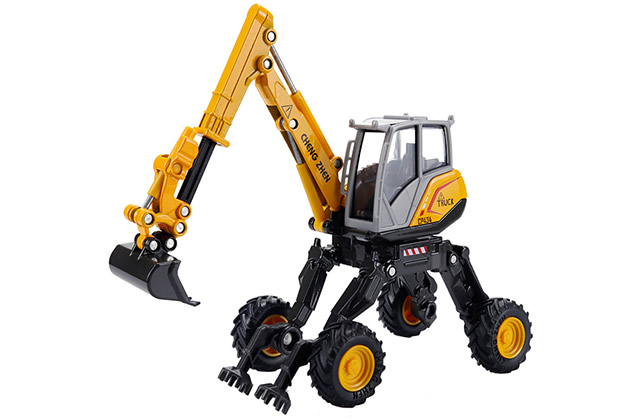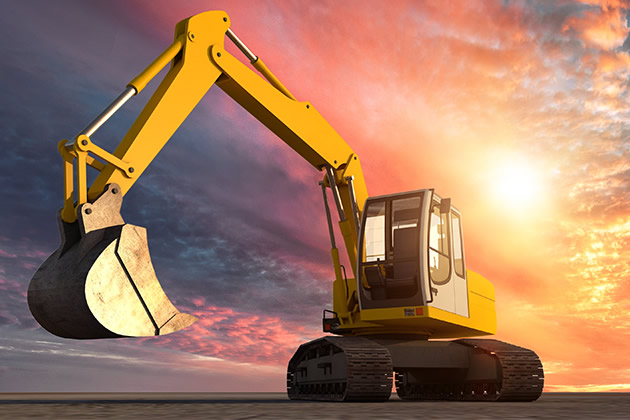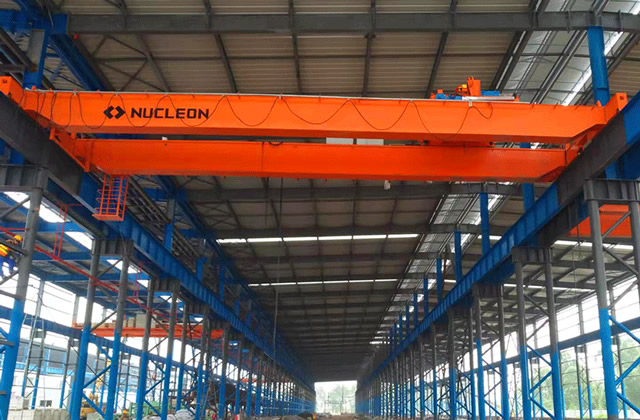What are the excavator maintenance skills?
1. Ask
“Ask” means to ask the operator about the faulty machine basic situation. Mainly understand the abnormal phenomena of the machine and whether the failure is sudden or gradual. Whether there are any illegal operations and maintenance during use. Whether the grade of hydraulic oil is correct and the situation of replacement, the timing of the failure, that is, whether it occurred at the beginning of the work or after a period of work, etc. After obtaining this information, the characteristics of the fault in the hydraulic system can be basically determined.

Generally speaking, sudden failures are mostly caused by dirty hydraulic oil or broken springs causing the valve to not close tightly. Gradual failures mostly occur due to severe component wear or aging of rubber seals and pipe fittings.
If the excavator starts working normally, but after working for a period of time, it slows down and is accompanied by noise and an increase in oil temperature (the oil temperature gauge indicates more than 75°C), troubleshoot the problem. In addition to insufficient oil, long-term heavy-load operation in a high-temperature environment, excessive dirt on the oil cooler radiator, and slippage of the fan belt, it may be caused by internal leakage in the pump or valve. For example, for an excavator, the pilot control pressure is normal at first, but soon its value drops. The inspection result was that the rubber oil inlet pipe of the pilot pump was heated and collapsed, causing the oil inlet to be blocked.
2. Seeing
“Looking” is to check the working condition of the hydraulic system through the eyes. For example, whether the amount of oil in the tank meets the requirements, whether there are bubbles and discoloration (the noise, vibration and crawling of the machine are often related to a large number of bubbles in the oil); oil leakage at sealing parts and pipe streets; pressure gauges and Changes in the indicated value of the oil temperature gauge during operation; whether the faulty parts are damaged, connections are gradually falling off, and fixing parts are loose. When hydraulic oil leaks out, after eliminating insufficient or uneven tightening bolt torque, and before replacing the oil seal that may be severely worn or damaged, you should also check whether the pressure exceeds the limit. When installing the oil seal, the model and quality of the oil seal should be inspected and assembled accurately.
3. Listening
“Listening” means using your ears to check whether there are any abnormal sounds in the hydraulic system. The sound of normal machine operation has a certain rhythm and tone and remains stable. Therefore, become familiar with and master these laws and stay stable. Therefore, if you are familiar with and master these rules, you can accurately diagnose whether the hydraulic system is working normally; at the same time, according to the changes in rhythm and melody, as well as the parts that produce abnormal sounds,By using the components, the component where the failure occurred can be determined, and the location where the failure occurred and the degree of damage can be determined. For example, a high-pitched and harsh whistling sound is usually caused by air being sucked in; a “chirping” or “gurgling” sound from a hydraulic pump is often caused by damage to the pump shaft or bearing; a “chipping” sound from a reversing valve is caused by the opening of the valve stem. Insufficient pressure; a thick “clicking” sound may be the sound of the overload valve being overloaded. If there is cavitation sound, it may be that the oil filter is blocked by dirt, the hydraulic pump suction pipe is loose, or the oil level in the fuel tank is too low.
4. Touch
“Touch” is to use sensitive finger touch to check whether there is vibration, impact and oil in the pipelines or components of the pressure system. Abnormal temperature rise and other faults. If you touch the pump shell or hydraulic parts with your hands, you can judge whether there is an abnormal temperature rise in the hydraulic system based on the degree of coldness and heat, and determine the cause and location of the temperature rise. If the pump casing is overheated, it means that the pump has serious internal leakage or air has been sucked in. If you feel abnormal vibration, it may be due to poor installation balance of the rotating parts, loose fastening screws, or gas in the system.
5. Test
“Test” is to operate the actuator of the machine’s hydraulic system and determine the location and cause of the fault based on its working conditions.
(1) Comprehensive interview. According to the design functions of the hydraulic system, experiments are conducted one by one to determine whether the fault is in a local area or in the entire area. If the entire machine fails or is weak, you should first check whether the pilot control pressure is normal, whether the clutch (coupling) is slipping (loose), whether the engine power is sufficient, whether the amount of hydraulic oil is sufficient, and whether the hydraulic pump inlet is sealed. If the fault symptom of an excavator is only the automatic lowering of the boom, the cause of the fault may be in the oil circuit of the reversing valve, overload valve or hydraulic cylinder, and has nothing to do with the hydraulic pump and main safety valve.
(2) Exchange test. When only a certain circuit or a certain function is lost in the hydraulic system, it can be exchanged with an oil circuit with the same (or related) function to further determine the fault location. For example, an excavator has two independent working circuits. Each circuit has its own components. When one circuit fails, the other pump can be connected to this circuit by exchanging high-pressure oil pipes. If the fault is still on one side, , it means that the fault is not on the pump.
How to repair common excavator faults
1. The engine speed drops
First of all, test The output power of the engine itself. If the engine output power is lower than the rated power, the cause of the failure may be poor fuel quality, low fuel pressure, incorrect valve clearance, a certain cylinder of the engine not working, incorrect injection timing, or adjustment of the fuel quantity. Wrong setting, air leakage in the intake system, faulty brakes and levers, and carbon deposits in the turbocharger. If the engine output power is normal, you need to check whether the flow rate of the hydraulic pump does not match the engine output power.
The speed of a hydraulic excavator is inversely proportional to the load during operation, that is, the product of flow rate and pump output pressure is an invariant, and the pump output power is constant or approximately constant. If there is a failure in the pump control system, the engine, pump and valve will not be able to optimize the load matching state in different working conditions, and the excavator will not be able to work normally. Such faults should start with the electrical system, then check the hydraulic system, and finally check the mechanical transmission system.
2. The working speed slows down
The main reason why the excavator’s working speed slows down is that the engine power decreases and the hydraulic system leaks due to wear and tear on all parts of the machine. The hydraulic pump of the excavator is a plunger variable pump. After working for a certain period of time, the internal hydraulic components of the pump (cylinder, plunger, distribution plate, nine-hole plate, turtle back, etc.) will inevitably wear excessively, which will cause internal leakage. The parameter data are not coordinated, resulting in insufficient flow, excessive oil temperature, and slow working speed. At this time, it is necessary to overhaul the entire machine and repair and replace the worn parts.
But if the excavator does not work for a long time and suddenly slows down, you need to check the following aspects. First check whether the circuit fuse is open or short-circuited, then check whether the pilot pressure is normal, then check whether the servo control valve-servo piston is stuck and whether the distributor merge is faulty, etc. Finally, disassemble the hydraulic pump for data measurement to confirm the problem of the excavator. .
3. Excavator powerlessness
Excavation powerlessness is one of the typical faults of excavators. Excavation powerlessness can be divided into two situations. One is that the digging is weak, the engine does not hold the car, and the load feels very light. The second type is inability to excavate. When the boom or stick is extended to the bottom, the engine will be severely choked or even stalled.
1. Excavation is weak but the engine does not hold the car back. The size of the digging force is determined by the output pressure of the main pump, and whether the engine is held back depends on the relationship between the torque absorbed by the oil pump and the output torque of the engine. If the engine does not hold up, it means that the oil pump absorbs less torque and the engine load is light. If there is no obvious abnormality in the excavator’s working speed, you should focus on checking the maximum output pressure of the main pump, which is the system overflow pressure. If the measured value of the overflow pressure is lower than the specified value, it indicates that the overload relief valve setting value of the hydraulic circuit of the mechanism is incorrect, resulting in premature overflow of the mechanism and inability to work. You can adjust the machine by turning the adjustment screw.
2. Excavation is weak and the engine is stuck. If the engine is held back, it means that the absorbed torque of the oil pump is greater than the engine output torque, causing the engine to be overloaded. For this kind of failure, you should first check whether the engine speed sensing system is normal. The inspection method is similar to the engine inspection method mentioned above. After the above detailed inspection and troubleshooting, the engine speed sensing system will return to normal functions, the engine holding phenomenon will disappear, and the digging force will return to normal.
4. Jumping gears
1. Reasons
(1) The transmission mechanism of the transmission mechanism is worn and used on the W4-60 excavator. It is a transmission mechanism for mechanical shifting. This transmission mechanism relies on a sliding gear sleeve in a fixed position.The gear sleeve moves axially and meshes with the driven gear of each gear to realize shifting. During frequent shifting, the tooth end surfaces of the above-mentioned meshing gears are easily ground into a tapered shape, resulting in reduced meshing performance and “jumping gears”.
(2) The performance of the self-locking mechanism is degraded. In order to prevent the transmission from “jumping gears”, this type of excavator has Ⅰ. The reverse gear shift fork is equipped with steel balls and springs that have a self-locking function. When the elasticity of the spring that plays a positioning and self-locking role is weakened or broken, the self-locking performance of the self-locking mechanism will decrease until it disappears, causing the transmission to “jump gears”. At the same time, if the positioning steel ball or the groove on the shift fork shaft is worn, it may also cause the transmission to “jump gears”.
(3) Improper adjustment of the shifting device. The transmission of this type of excavator adopts a mechanical manual shifting method. If the transmission lever, longitudinal axis, horizontal axis and vertical fixing screws are loose, the transmission may also be damaged. “Jump block”.
(4) Sudden changes in external loads. Due to the working nature of the excavator and the design of the machine itself, sudden changes in external loads will also cause the transmission to “jump”. When the road surface is uneven, the machine is driving downhill, or the driving route is improper and the external load suddenly changes, this sudden change in load will act on the gear meshing gear of the transmission through the wheels and transmission shaft, causing the gear meshing gear to change. It disengages due to the axial thrust, causing the transmission to “jump gears”.
(5) Improper operation method When the excavator is driving on a slope (especially downhill), improper operation will also cause the transmission to “jump”.
2. Preventive measures
(1) Strictly follow the operating procedures and driving essentials, and try to avoid “beating the gears” when shifting gears to reduce wear of the gear pair.
(2) Strictly implement the maintenance system and strengthen the maintenance of the gear shifting device. When the shift device lever is improperly connected, it should be adjusted in time to ensure that the shift device performs well.
(3) Pay attention to the repair and maintenance of the self-locking mechanism. The positioning steel balls, springs and fork shafts whose positioning effect is reduced or lose their positioning performance should be repaired or replaced in time to ensure the safety of the self-locking mechanism. The self-locking performance is in good condition.
(4) When assembling the transmission, the operating procedures should be strictly followed to ensure that all parts of the transmission are adjusted correctly and tightened appropriately. When driving on a large downhill road, the driver should strictly follow the downhill movement essentials and must not violate the rules.
3. Emergency response methods
During the driving of the excavator, if the transmission “jumps” occurs, the machine should be stopped in time (or continue driving), and then the cause should be found. , troubleshooting. The specific methods are:
(1) If “jumping gear” occurs when driving on a flat road, you can stop the engine according to normal shutdown procedures, carefully find the cause, and eliminate the fault.
(2) If “jumping gear” occurs when driving uphill, you can set the gear to the low-speed position or the I gear position, and then stop the machine when it reaches the top of the slope to troubleshoot; if you downshift Unsuccessful or out againWhen “jumping gear” occurs, the engine should be stopped according to the ramp shutdown instructions and requirements, and then the fault should be eliminated.
(3) If a “jumping gear” occurs when driving on a downhill slope, the gear position should be set to a high-speed position according to the up-shifting action or take “jumping gear” (emergency downshifting) measures. Wait until the machine reaches the bottom of the slope before stopping the machine for inspection and troubleshooting; if “adding gear” or “grabbing gear” fails or “jumping gear” occurs again (it is neutral at this time), the driver can control the engine speed at At medium speed (to prevent the engine from stalling), use the “point braking” method to slide the machine to the bottom of the slope, and then troubleshoot. If “add gear”, “block grab” is unsuccessful or “jump gear” occurs again (it is neutral at this time), and the machine is going down a large slope (at this time the machine will move toward the bottom of the slope very quickly) “Dive”), you should quickly stop according to the action essentials and requirements of downhill stop, and then eliminate the fault.
5. Boom repair
When inspecting the welds of the excavator arm side plates for corrosion and cracks, it is necessary to scrape off the paint and rust on the surface of the welds or Polish it clean, tap the weld with a small hammer when observing, and use a magnifying glass to observe if necessary.
1. Reasons for cracks
The reasons for cracks in the excavator arm side plate include bubbles, slag inclusions and tiny cracks in the original weld itself. During load operation, tiny cracks will occur in the original weld and slowly expand; cracks will occur due to inconsistency between the performance of the welding rod and the plate during welding; due to the large size of the excavator arm, it is difficult to adopt reliable and effective heating and insulation measures. It can completely remove the hardened area of the base metal around the weld, resulting in a decrease in the strength of the weld. During the operation of the excavator, the vibration and impact are large, and the uneven stress on the weld will cause the weld to crack.
2. Repair method
Preparation before welding: Use a hand grinding wheel to remove oil, paint, rust, etc. from the cracks in the original weld. Use a gouging machine to cut away the cracks in the welding seam to the body of the side plate, and clean the hardened area of the base metal that was previously welded. After planing, use an angle grinding wheel to smooth the incision (the inner interface is grinded to create a V-shaped groove). After cleaning and pink inspection, confirm that all cracks have been found and removed.
According to the existing maintenance conditions, select the Φ5mm model E5015 (J507) or E5016 (J506) electrode, bake it at 350℃ for 2 hours, and then insulate it at 100℃ to prevent the electrode from absorbing moisture. Available at will; welding current 190~230A. Due to the large thickness of the excavator side plate, the welded part should be preheated to 150~250℃ before welding; during the welding process, segmented, symmetrical, and backward methods can be used for welding; during the cooling process of the weld seam, welding should be continued Use a hand hammer to tap the weld metal to eliminate stress; when welding at the corners of the side plates, in order to avoid arc defects, welding should be performed continuously to improve the stress condition of the connection.
After welding, thoroughly remove spatter, welding slag, welding flash, etc., and the weld reinforcement shall not be greater than 2 or 5 mm. Magnetic particle inspection is performed on the welds, and defects such as cracks are not allowed.
3. Measures to prevent weld corrosion
Thoroughly polish, remove rust and apply anti-rust paint to the weld. At the excavation construction site, for the existing rusted welds, manual rust removal can be selected based on the actual conditions of the excavation. The disadvantage is that the labor intensity of workers is high and the labor cost is high. Pickling can also be used to remove rust, that is, using organic acids as the method. The main base material is mixed with composite materials such as corrosion inhibitors, surfactants, rust removers, anti-rust agents and film-forming agents to prepare a pickling solution with rust removal, anti-rust and primer functions. Through cleaning, it can achieve Rust removal and rust prevention purposes.
In addition, during use, attention should also be paid to keeping the excavator in a clean and dry environment, maintaining good ventilation, and eliminating corrosive gases and moisture in a timely manner.
If the website content violates your rights, please contact us to delete it。








